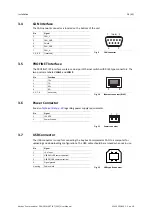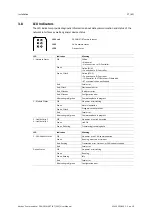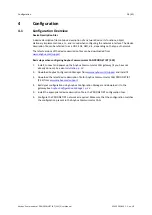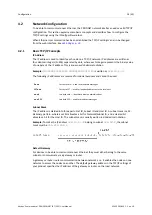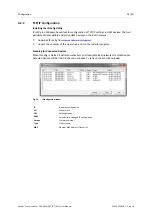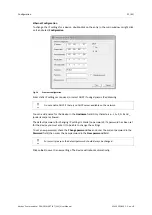
8 (42)
2.4
CAN Network Protocol
2.4.1
General
The CAN protocol is message-based and can exchange up to 8 bytes of data in each message.
The protocol only acts as a data carrier, it is up to each application to define and interpret the
data content of the messages.
Data is exchanged using
frames
. Each frame has a unique identifier for the data it exchanges,
which also represents the message priority. Anybus Communicator CAN supports both 11-bit
(CAN 2.0A) and 29-bit (CAN 2.0B) identifiers, selected in the configuration.
CAN is essentially a produce-consume protocol, where all nodes listen to all messages. The
devices recognize what data to collect by the identifier in the CAN frame. Anybus Communicator
CAN is also able to act as a network master and issue
queries
that demand
responses
. Both
methods can be used within the same configuration.
2.4.2
Message Types
Anybus Communicator CAN features three CAN message types:
Query-Response
,
Produce
, and
Consume
. These message types only specify the basic communication model, not the actual CAN
protocol. All three message types can be used in the same configuration.
Query-Response
The Anybus Communicator CAN here acts as a master on the CAN subnetwork, and
communication takes place in a query-response fashion. The gateway sends a query and expects
a response within a specified timeout.
Fig. 4
Query-Response messaging
Produce and Consume
Here there is no master-slave relationship between the Anybus Communicator CAN and the
subnetwork nodes. Any node, including the gateway, may both
produce
and
consume
messages.
Nodes do not have to respond to messages, or wait for a query in order to send one. The
consumed data can be accessed from the higher level network, and vice versa.
Anybus
®
Communicator
™
CAN PROFINET
®
IRT (2.32) User Manual
SCM-1202-035 1.2 en-US
Содержание Anybus Communicator CAN PROFINET IRT 2.32
Страница 40: ...This page intentionally left blank ...
Страница 43: ...This page intentionally left blank ...


















